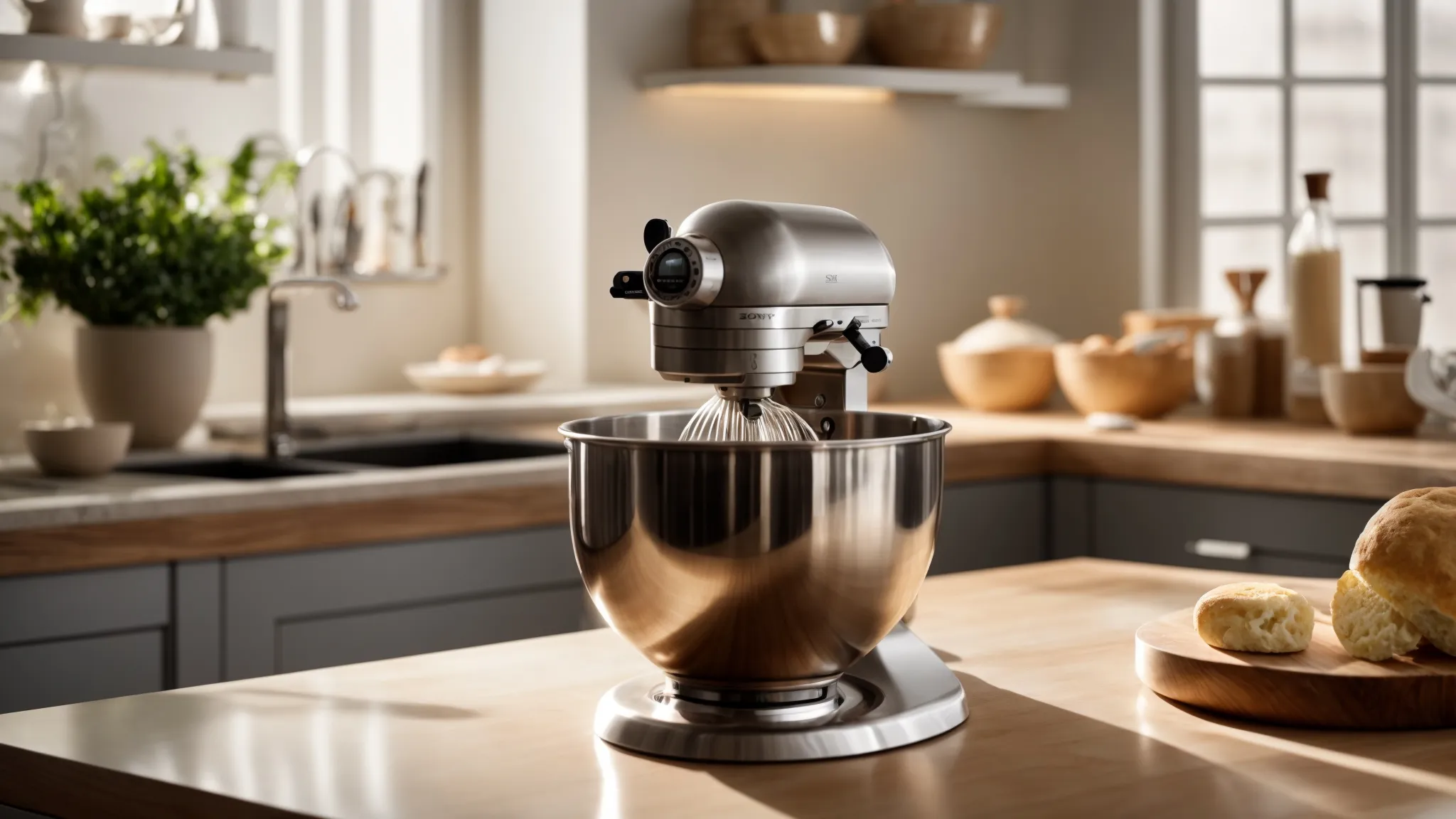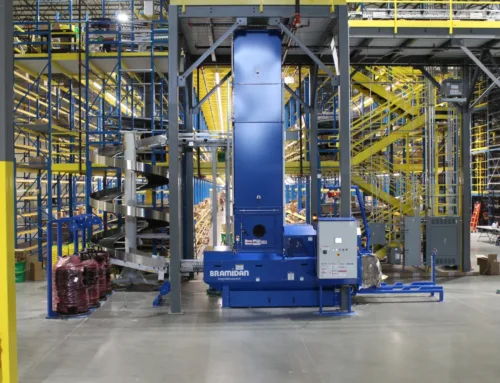
When it comes to commercial baking, selecting the right dough mixer is vital for ensuring quality and efficiency in food production. As a bakery owner, you might struggle with choosing equipment that meets your specific needs, especially when it involves handling different volumes of flour or cream. This article will explain key types of commercial dough mixers, the various mixer styles and configurations available, and essential components to consider. By understanding these elements, you can make informed decisions that enhance your bakery’s productivity and consistency in results.
Key Types of Commercial Dough Mixers

When selecting the right commercial dough mixer, understanding the distinct types can significantly impact your production process. Spiral mixers are designed for yeast dough, featuring a steel bowl that enhances rotation efficiency. Planetary mixers offer versatility for various tasks, while horizontal mixers excel in large batch production. Vertical cutters serve specialized applications, and bench mixers cater to smaller operations, making them invaluable in diverse commercial environments, such as deli equipment and condensers.
Spiral Mixers and Their Unique Features
Spiral mixers are an exceptional choice for bakers focusing on yeast dough due to their unique design that promotes efficient mixing. The powerful motor and specialized spiral arm create a consistent dough texture, producing reliable results that support everything from bread to pastries. A well-chosen spiral mixer from a trusted brand enhances the baking process, ensuring optimal performance as you work towards achieving perfectly baked goods ready for the oven:
- Efficient mixing for yeast-based dough.
- Consistent texture and quality in baked products.
- Ideal for high-volume production in commercial kitchens.
- Robust design suitable for various dough types.
Planetary Mixers and Their Versatility
Planetary mixers are essential tools in foodservice settings due to their remarkable versatility. They can handle a range of tasks, from mixing batter for cakes to kneading dough for bread, making them invaluable for diverse culinary operations. With a rotating spiral arm that reaches all areas of the bowl, these mixers ensure a thorough blend, producing consistent results that enhance the quality of baked goods, whether you’re working on a small batch or scaling up for larger production at End2End Logix.
Horizontal Mixers for Large Batch Production
Horizontal mixers are robust solutions perfect for large batch production, especially when it comes to baking dough. Their stainless steel construction ensures durability and efficient kneading, allowing me to handle significant volumes without compromising on texture or consistency. When selecting a horizontal mixer, I always recommend verifying the warranty, as a solid warranty reflects the manufacturer’s confidence in their equipment and offers peace of mind during high-demand periods.
Vertical Cutters and Their Specialized Applications
Vertical cutters are highly valued in commercial kitchens for their specialized applications, especially when it comes to efficiently preparing ingredients for various meals. These countertop mixers utilize friction to blend, chop, or emulsify ingredients, making them ideal for producing sauces, doughs, or fillings with a smooth consistency. In my experience, investing in a quality vertical cutter not only streamlines operations but also enhances the culinary creations offered to customers, particularly in a busy environment like merchandisers where time and quality are essential.
- Designed for efficient ingredient preparation.
- Utilizes friction to ensure smooth blends.
- Perfect for sauces, doughs, and fillings.
- Enhances workflow in high-demand commercial kitchens.
Bench Mixers for Smaller Operations
Bench mixers are essential machines for smaller operations, providing bakery equipment that meets the unique demands of artisanal and niche production. With their compact design, they excel at whipping egg whites, kneading dough, or even mixing meat for deli items without occupying excessive counter space. Having worked with various bench mixers, I can attest to their versatility and reliability, making them a valuable addition to any bakery or foodservice establishment that prioritizes quality and efficiency.
Now that we’ve explored the key types of commercial dough mixers, it’s time to examine how these machines come alive in different styles and configurations. Understanding these variations will help you choose the right fit for your kitchen’s needs.
Mixer Styles and Configurations

Countertop mixers are ideal for operations with limited space, allowing efficient mixing without occupying much countertop area. Stand mixers offer broader applications, suitable for various tasks, including whipping cream and kneading dough. For high-volume production, floor mixers feature robust transmissions and gear systems, efficiently handling large batches with ease and precision. Each type plays a significant role in optimizing your baking process.
Countertop Mixers for Limited Space
Countertop mixers are an excellent solution for foodservice operations that need to maximize limited kitchen space while still maintaining high-quality cooking results. With their compact size, they excel at tasks such as mixing gluten-rich dough, whipping eggs, or preparing batters without requiring extensive counter area. In my experience, these mixers can be easily cleaned in a dishwasher, streamlining the cleanup process and allowing me to focus on creating delicious products. If you’re considering enhancing your kitchen’s productivity, feel free to contact us for insights on selecting the right countertop mixer for your needs.
Stand Mixers for Broader Applications
Stand mixers are incredibly versatile tools in commercial kitchens, ideal for a wide range of food processing tasks such as mixing cookie dough, whipping cream, or kneading bread. With various horsepower options, these mixers can efficiently handle different batch sizes while ensuring consistent results. I appreciate how easy they are to clean, especially considering the importance of sanitation in a bakery environment; the removable wire whisks and mixing bowls make the cleanup process straightforward.
- Versatility in food processing tasks.
- Available in different horsepower for diverse needs.
- Streamlined sanitation with removable components.
Floor Mixers for High-Volume Production
Floor mixers are indispensable in high-volume production environments such as commercial bakeries, where consistent results and durability are paramount. Their robust design, featuring powerful motors and heavy-duty transmissions, allows me to knead large batches of dough efficiently without sacrificing texture or quality. Properly selecting a floor mixer not only enhances productivity but also ensures that I can consistently meet customer demands for a variety of baked goods:
- Designed for heavy-duty use in large operations.
- Powerful motors for efficient mixing of substantial quantities.
- Ensures consistency in dough texture and quality.
- Ideal for meeting high production demands.
Choosing the right mixer style is just the beginning. Understanding the essential components will reveal how to achieve consistent results every time.
Essential Mixer Components

Understanding the essential components of a commercial dough mixer is vital for optimizing performance in any baking operation. I will cover the dough mixing mechanism, which directly impacts consistency, as well as the importance of bowl size and shape in achieving desired results. Evaluating the right mixer attachments and accessories can enhance functionality, while identifying key safety features ensures a secure working environment.
Understanding the Dough Mixing Mechanism
Understanding the dough mixing mechanism is essential for achieving consistent results in commercial baking. Each mixer type operates differently, utilizing specific mixing tools that influence the dough‘s texture and quality. For instance, spiral arms in spiral mixers create a unique kneading action that is ideal for yeast-based dough, while planetary mixers’ versatile configurations ensure thorough blending for various recipes. Knowing how these mechanisms work helps me select the right equipment for my baking needs:
- Different mixing mechanisms impact dough consistency.
- Spiral mixers are best for yeast dough.
- Planetary mixers offer versatility across various tasks.
- Understanding mechanisms aids in choosing the right mixer.
Importance of Bowl Size and Shape
The size and shape of the bowl in a commercial dough mixer play a crucial role in determining how effectively the ingredients blend and knead. A larger bowl can accommodate larger batches, which is essential for high-volume production, while the bowl’s shape influences the mixing action needed for different dough types. For instance, a wider bowl allows for thorough mixing in planetary models, ensuring that all ingredients are evenly incorporated, while spiral mixers with deep bowls are designed specifically for efficient kneading of yeast-based doughs, promoting consistent texture and quality.
Evaluating Mixer Attachments and Accessories
When evaluating mixer attachments and accessories, I focus on how they can enhance the functionality of my commercial dough mixers. Various attachments, such as dough hooks, whisks, and paddles, serve specific purposes, allowing me to adapt my mixer for different tasks like kneading, whipping, or mixing. Investing in quality attachments not only improves efficiency but also ensures I achieve the consistency and texture needed for a variety of baked goods, maximizing the value of my equipment in busy operations.
Identifying Key Safety Features
Identifying key safety features in commercial dough mixers is essential for ensuring a secure baking environment. I prioritize mixers equipped with safety guards that prevent accidental contact with moving parts, and I appreciate those with automatic shut-off mechanisms that activate when the bowl is lifted or if an obstruction occurs. By choosing equipment that emphasizes safety, I can focus on production without worrying about potential hazards, creating a safer workplace for myself and my team.
Understanding the key components of a mixer is only the beginning. Selecting the right commercial dough mixer can make all the difference in your baking success.
Selecting the Right Commercial Dough Mixer

Selecting the Right Commercial Dough Mixer
To make an informed choice when selecting a commercial dough mixer, I analyze various factors such as dough types and textures, production volume and frequency, available operational space, and maintenance requirements. By examining these aspects, I can ensure that the chosen mixer aligns with the specific demands of my baking operations, ultimately enhancing productivity and product quality.
Analyzing Dough Types and Textures
When analyzing dough types and textures, it’s crucial to select a commercial dough mixer that aligns with specific baking needs. I consider factors such as hydration levels and the desired outcome, whether I’m working with soft bread dough or stiff pasta dough. Understanding these elements allows me to choose a mixer that can effectively handle the mixing requirements, ensuring consistency and quality in my baked products.
Considering Production Volume and Frequency
When selecting a commercial dough mixer, production volume and frequency are critical factors to consider. If I am operating in a high-demand environment, such as a busy bakery, I typically choose a robust mixer capable of handling large batches consistently. Conversely, for lower-volume operations, a smaller, more versatile mixer suffices, providing the flexibility needed for occasional production without taking up excessive space.
Evaluating Operational Space Constraints
When evaluating operational space constraints for selecting a commercial dough mixer, I always consider the available kitchen layout and workflow. For example, if I have limited space, a countertop mixer might be the best fit, allowing me to utilize vertical space without sacrificing functionality. Conversely, if I’m working in a larger kitchen, I can opt for a floor mixer, which supports high-volume production while providing ample mixing power, ensuring I meet my baking requirements efficiently.
Assessing Maintenance and Upkeep Needs
When assessing maintenance and upkeep needs for a commercial dough mixer, I prioritize understanding the specific requirements of each model. Regular cleaning and checking components such as the motor, gears, and mixing attachments are essential to prolong the mixer’s lifespan and maintain optimal performance. By investing time in routine maintenance, I ensure my equipment operates efficiently, reducing the risk of unexpected downtime and preserving the quality of my baked goods.
Choosing the right commercial dough mixer is just the beginning. The true measure lies in how it performs and boosts efficiency in your kitchen.
Mixer Performance and Efficiency

When evaluating commercial dough mixers, understanding performance and efficiency is vital. I’ll compare horsepower and motor output, highlighting how they influence mixing capabilities. Next, we’ll discuss mixing speeds and functions to ensure optimal results for various dough types. Finally, I’ll evaluate durability and longevity, which are crucial for maintaining consistent production in any bakery setting.
Comparing Horsepower and Motor Output
When comparing horsepower and motor output in commercial dough mixers, I focus on how these factors directly influence mixing performance. A higher horsepower often translates to greater efficiency, especially in heavy-duty tasks where dense or large batches of dough are involved. For instance, I have found that mixers with robust motor outputs are able to maintain consistent mixing speeds, even when handling thick doughs, which ultimately results in improved texture and quality for the final baked products.
Understanding Mixing Speeds and Functions
Understanding mixing speeds and functions is critical when I evaluate commercial dough mixers. Each type of mixer offers varying speed settings, which allow me to tailor the mixing process to different dough textures and hydration levels. For example, lower speeds are effective for gently incorporating dry ingredients, while higher speeds efficiently develop gluten in bread dough, ensuring consistency and quality in my baked products.
Evaluating Durability and Longevity
When I assess the durability and longevity of commercial dough mixers, I focus on materials and construction quality. Mixers made from stainless steel or other robust materials tend to withstand the stresses of high-volume production better than those made from lighter materials. In my experience, investing in equipment with solid build quality not only reduces maintenance issues but also ensures that I can depend on my mixer for consistent performance over time, especially during peak production periods.
A well-performing mixer is only as good as its upkeep. Proper care will not only extend its life but also enhance its performance in every batch.
Care and Maintenance for Commercial Dough Mixers

Routine cleaning protocols are essential for maintaining the efficiency of commercial dough mixers. I also emphasize the importance of frequent service checks and repairs to address any emerging issues promptly. Best practices for extending mixer lifespan will ensure that your equipment remains reliable and performs optimally for your baking needs. Together, these topics provide a solid foundation for equipment care.
Routine Cleaning Protocols
Maintaining routine cleaning protocols for commercial dough mixers is essential to ensure they operate effectively and safely. I recommend immediately cleaning the mixer after each use to prevent dough residue from hardening, which can make thorough cleaning more challenging later on. Using warm soapy water and a soft cloth, I carefully clean the bowl and attachments, making sure to avoid abrasive materials that could damage the surfaces, thereby preserving the quality and longevity of the equipment.
Frequent Service Checks and Repairs
Frequent service checks and repairs are essential for maintaining the performance of commercial dough mixers. I recommend establishing a routine to inspect key components such as motors, gears, and mixing attachments for wear and tear. By addressing any issues promptly, I can prevent major breakdowns and ensure that my equipment continues to perform reliably in a high-demand bakery environment.
Best Practices for Extended Mixer Lifespan
To extend the lifespan of commercial dough mixers, I prioritize implementing best practices that keep my equipment running smoothly. Regular inspections of key components such as motors and gears help identify wear and tear before they become larger issues. Additionally, ensuring that I clean the mixer immediately after each use and following a maintenance schedule can prevent the build-up of debris and residues that could affect performance over time:
- Conduct routine inspections to catch potential issues early.
- Clean the mixer after each use to prevent residue build-up.
- Follow a maintenance schedule for optimal performance.
Conclusion
Understanding the various types of commercial dough mixers is essential for optimizing your baking operations. Each mixer type—whether spiral, planetary, horizontal, vertical cutter, or bench—serves specific needs and enhances production efficiency in different environments. Selecting the right mixer based on dough types, production volume, and available space can significantly improve the consistency and quality of your baked goods. Prioritizing the right equipment ensures that your bakery meets both customer demands and operational goals effectively.
Share This Story, Choose Your Platform!
Get In Touch
Phone: (847) 722-6942
Email: sales@end2endlogix.com
Web: end2endlogix.com


